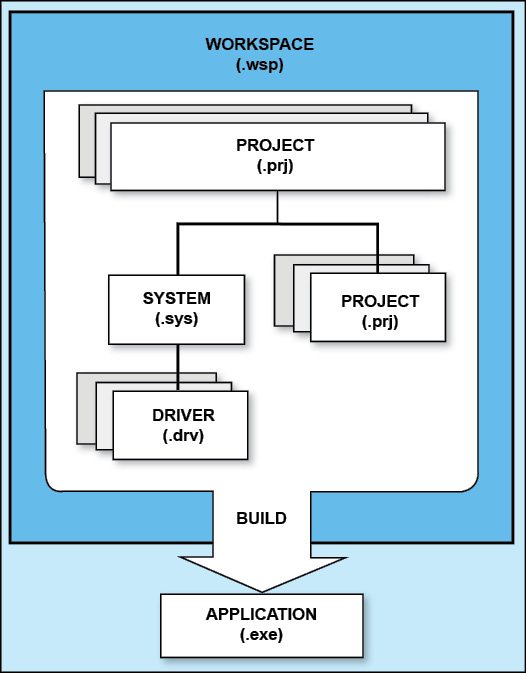Marvin Test Solutions’ ATEasy is targeted at people engaged in the development and use of automated test equipment. Here we discuss its features, hardware and software specifications along with its workspace environment, modules and applications.
EFY Bureau
ATEasy is a test executive and a software development environment for test and measurement (T&M) applications. It contains all the tools required to develop test applications for automated test equipment (ATE) systems and instrument control applications.

ATE systems are used to perform testing on one or more electronic products called units under test (UUTs) such as components, boards and assemblies. Typically, these consist of a computer/controller, several test and measurement instruments and a test application designed to control system instruments in order to test the UUT.
The ATEasy integrated development environment (IDE) allows users to quickly develop automated test programs using a wide variety of hardware and software assets including PXI, PCI and GPIB as well as LabVIEW, C++ and .NET. ATEasy facilitates rapid application development but it is greatly focused on test development.
ATEasy has many built-in structures that are object-oriented and allow developers to focus on building a test without having to worry about certain detailed implementations such as log reporting. The ATEasy test executive provides a highly intuitive graphical user interface (GUI) for executing ATEasy test programs. The ready-to-use GUI adapts to the test environment that it is linked to. It also frees the test developer from detailed implementation that he would typically need to develop from scratch when using other test platforms.
Why use ATEasy for automated test systems?
An automated test system, also referred to as automated test equipment (ATE), is a collection of instruments under computer control performing automated test functions. Fig. 1 shows the typical configuration of an ATE system. A computer provides control over test and measurement instruments by using hardware interfaces. The instruments, such as measurement, stimulus, switching, power and digital instruments, are connected to the UUT through an adaptor.
The most common computing tool used in ATE applications is the PC. Due to its relatively low-cost computing power and availability of hardware interfaces as well as computer programs, the PC has become the de-facto standard of the test industry. The PC supports numerous interfaces for controlling test instruments. These interfaces include IEEE-488 (GPIB), VXI, ISA bus, PXI/PCI bus, LXI/TCP-IP, serial communication such as RS-232/422/485 and USB. Software programs such as ATEasy allow the computer to control test instruments using any of these interfaces.
Test instruments include:
1. Measurement instruments to measure electrical characteristics
2. Stimulus instruments to generate electronic signals
3. Digital instruments to read and write digital patterns
4. Power instruments using power sources
5. Switching instruments to route electrical signals to different points

The adaptor, also referred to as interface test adaptor, routes signals from the test system to the UUT, which is the target of the ATE. Under software control, the computer performs test sequences and procedures to determine whether the UUT is performing according to its specifications. The tasks required are controlling the test instruments, routing signals to various test points in the UUT, and measuring UUT responses. ATEasy provides all the tools required during the development, debugging and integration of test sequences and procedures.
Running on Microsoft Windows, ATEasy provides a familiar GUI combined with the flexibility of an object-oriented programming environment. Users of Microsoft Visual Basic or Visual C++ will feel right at home. Supporting any instrument, regardless of its interface, ATEasy develops an ATE application in a single integrated environment. With specialised features designed for testing and instrument control applications, it can also be used for data acquisition, process control, lab applications, calibration and any application requiring instrument control. ATEasy supports many instrument interfaces including VXI, GPIB (IEEE-488), RS-232/422, PC boards, PXI and LXI (TCP/IP).
ATEasy’s IDE is object-oriented and data-driven. It automatically selects editing tools according to the type of the object to be created or modified. This feature simplifies programming as you merely click an object and ATEasy automatically selects the appropriate tool.
Features
The ATEasy IDE includes tools for creating instrument drivers, user interface, tests, documentation, test executives, report generation and anything else you need to create T&M applications—all with point-and-click and drag-and-drop ease.
ATEasy contains a high-level programming language enabling test engineers, electronics engineers and programmers to develop and integrate applications of any scale—small to large, and simple to complex. The ATEasy programming language allows user-defined statements to be used along with flow control, procedures, variables and other common items found in most programming languages. It is flexible and powerful, yet easy-to-use and self-documenting.










